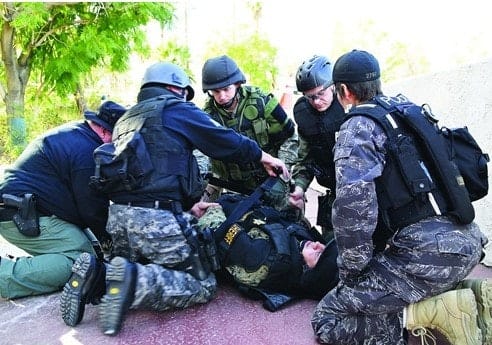Experienced warfighters also point out that one tourniquet may not be enough to control a severely bleeding wound. Sometimes a second or third devices is necessary. Gauze—when available—and manually held pressure as well as a hemostatic agent like Quik-Clot can be essential.
Get the Equipment
Among the four basic types of tourniquets—windlass, elastic, pneumatic, and ratcheting—the windlass is the most commonly used in law enforcement for emergency purposes. The North American Rescue CAT Tourniquet, GEN 7 Combat Application Tourniquet is one of the most popular among windlass-type models, and the First Voice SWAT-T Tourniquet is an excellent choice among elastic options.
In the unfortunate event that you don't have an actual tourniquet available—or perhaps you need more than one as mentioned above and you've already used the one on your duty belt or load-bearing-vest—improvised tourniquets can be surprisingly effective.
In the immediate aftermath of the Boston Marathon bombing in 2013, hospital emergency room staff saw that arriving victims had on their extremities tourniquets fashioned from "belts, shirts, and other materials" and said later in media briefings that "without a doubt, tourniquets were a difference-maker and saved lives."













